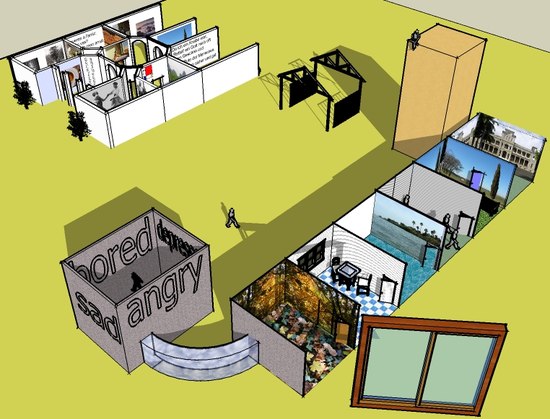Sometimes, when I could not sleep because of some worry made me suffer, I was angry because I could not control my mind, once and again, obsessionally went back to the issue that kept me anxious, anger or sadness, like some that pulled me to a closed room and would not let me out. I developed a trick that consisted in imagining me opening the door and get into a new space, the first one that entered my mind. It could be a terrace overlooking a garden with cypresses, a room in a palace, a beach and the sea, a dining room with unknown fellow diners around a table laid out, a forest in fall, the schoolyard when I was eleven with some mates, the idea is to keep changing places, leaving the mind, freely and automatically, to propose a new scene, different from the former one, as if I went traversing the rooms of a huge palace.
Now that I got to know about the memory palaces as a technique, I can relate both things and think about mental contents as spaces to be walked through. So, when I fall in a prison of sadness or obsession, I can get out, visit my memory palace or the long corridor of automatic scenes. Following a wikipedia link I found out that Tomas Harris’ Hannibal Lecter has also a memory palace filled with frescoes and sculptures where he can find solace. To exploit more possibilities of the mind and architecture metaphor, two more things: we can leave the closed room where we feel oppressed, and wander in open, indeterminate spaces where perhaps we could build new extensions for our memory palace. Or climb a tower from where things would be seen from a wider perspective. Or, or course, stop thinking and go to the window of present, the window of now and here, with all the interesting details of life scintillating around us, balconies from blocks in the street, faces of people walking in the street, shops, sounds and noises, a breeze, our breath and heart beats … all we are missing when paying too much attention to our problems and obsessions.
We have to avoid what Baudelaire said in some terrible verses in “Le mauvais moine”:
Mon âme est un tombeau que, mauvais cénobite,
Depuis l’éternite je parcours et j’habite;
Rien n’embellit les murs de ce cloître odieux.
My soul is a tomb where, bad cenobite,
I wander and dwell eternally;
Nothing adorns the walls of that loathsome cloister.
Either we change the decoration, or we get out.

